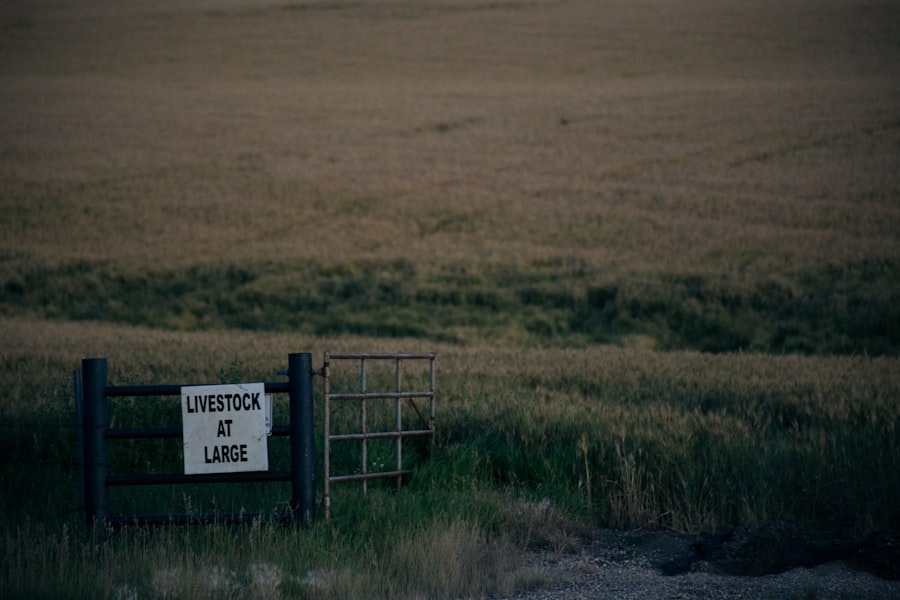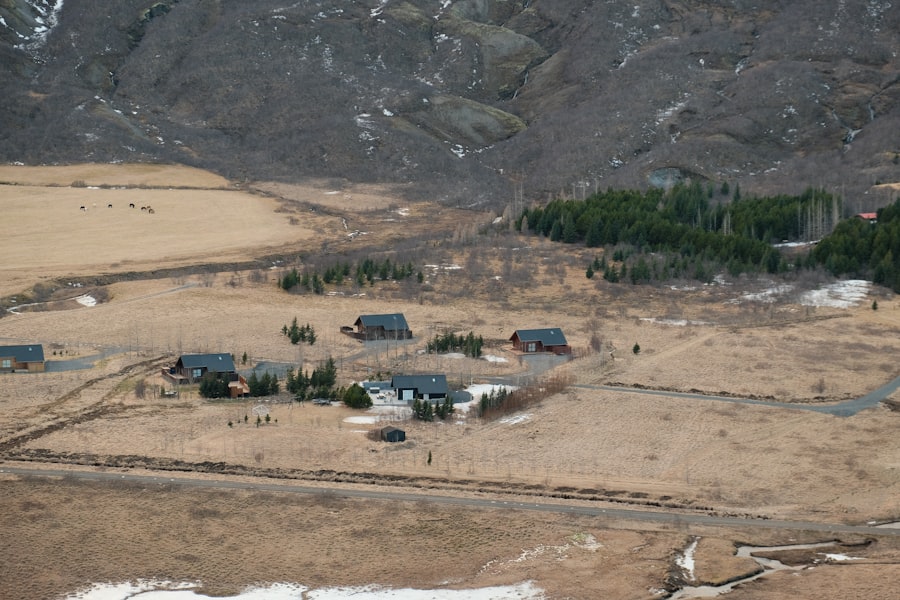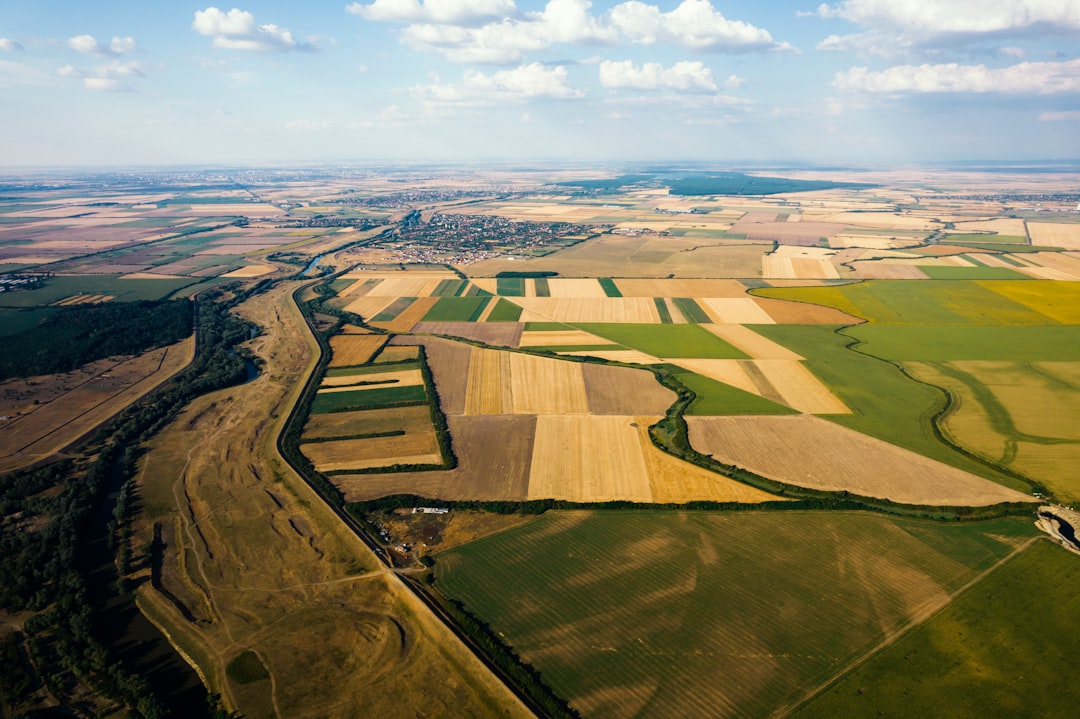The Great Plains, a vast expanse of flatlands stretching across the central United States and parts of Canada, is a region characterized by its unique geography, climate, and ecosystems. This area, often referred to as the “breadbasket” of North America, has been shaped by centuries of human activity and natural processes. The land use practices in the Great Plains have evolved significantly over time, influenced by agricultural demands, economic pressures, and environmental considerations.
Understanding the complexities of land use in this region is crucial for addressing the challenges it faces today. As the Great Plains continue to be a focal point for agricultural production, energy development, and urban expansion, the implications of these activities on the environment and local communities are profound. The balance between utilizing the land for economic gain and preserving its ecological integrity is a delicate one.
This article aims to explore the historical context of land use in the Great Plains, the conflicts that arise from modern practices, and the various perspectives that shape the future of this vital region.
Key Takeaways
- Historical land use practices in the Great Plains have shaped the current landscape and continue to influence modern land use conflicts.
- Modern land use in the Great Plains has led to conflicts between agricultural, industrial, and environmental interests, highlighting the need for sustainable practices.
- Land use in the Great Plains has resulted in environmental impacts such as soil erosion, water depletion, and habitat loss, necessitating conservation and sustainable practices.
- Economic considerations play a significant role in Great Plains land use, with agriculture, energy development, and tourism driving decision-making processes.
- Indigenous perspectives on Great Plains land use offer valuable insights into sustainable practices and the preservation of cultural and natural resources.
Historical Land Use Practices in the Great Plains
Historically, the Great Plains were inhabited by Indigenous peoples who had a deep understanding of the land and its resources. They practiced sustainable land use methods that respected the natural cycles of the environment. These communities relied on hunting, gathering, and agriculture, cultivating crops such as maize and beans while managing bison populations through controlled hunting practices.
Their relationship with the land was symbiotic, emphasizing stewardship rather than exploitation. With the arrival of European settlers in the 19th century, land use practices underwent a dramatic transformation. The introduction of plow agriculture marked a significant shift as settlers sought to cultivate vast tracts of land for wheat and other cash crops.
This led to extensive soil disturbance and a departure from traditional practices. The Homestead Act of 1862 further accelerated this trend by encouraging settlement and agricultural development, often at the expense of Indigenous lands and ecosystems. As a result, the Great Plains became a landscape dominated by monoculture farming, which significantly altered its ecological balance.
Conflicts Arising from Modern Land Use in the Great Plains

In contemporary times, land use in the Great Plains has become increasingly contentious. The expansion of industrial agriculture has led to conflicts over water rights, land ownership, and environmental degradation. Farmers and ranchers often find themselves at odds with corporate interests that prioritize profit over sustainable practices.
This tension is exacerbated by the growing demand for resources such as water for irrigation and energy production, leading to competition among various stakeholders. Moreover, urbanization has introduced additional layers of complexity to land use conflicts. As cities expand into rural areas, agricultural lands are often converted into residential or commercial developments.
This encroachment not only threatens local food production but also disrupts traditional ways of life for many rural communities. The struggle to balance economic growth with environmental preservation has become a central issue in discussions about land use in the Great Plains.
Environmental Impacts of Land Use in the Great Plains
| Environmental Impact | Metrics |
|---|---|
| Soil Erosion | tons of soil lost per year |
| Water Pollution | amount of nitrogen and phosphorus runoff |
| Habitat Loss | acres of natural habitat converted to agriculture |
| Greenhouse Gas Emissions | tons of CO2 equivalent emitted from land use |
The environmental consequences of land use practices in the Great Plains are significant and multifaceted. Intensive agriculture has led to soil degradation, loss of biodiversity, and increased greenhouse gas emissions. The reliance on chemical fertilizers and pesticides has further exacerbated these issues, contaminating water sources and harming local ecosystems.
The once-thriving grasslands are now at risk due to overgrazing and conversion to cropland, resulting in habitat loss for numerous species. Additionally, climate change poses a growing threat to the Great Plains’ environment. Altered precipitation patterns and rising temperatures have made the region more susceptible to droughts and extreme weather events.
These changes not only impact agricultural productivity but also strain water resources essential for both farming and wildlife. The cumulative effects of these environmental challenges underscore the urgent need for sustainable land use practices that prioritize ecological health alongside economic viability.
Economic Considerations in Great Plains Land Use
The economic landscape of the Great Plains is heavily influenced by its agricultural output, which remains a cornerstone of the region’s economy. Farmers contribute significantly to local and national markets through the production of grains, livestock, and other commodities. However, this reliance on traditional agricultural practices can create vulnerabilities in times of market fluctuations or adverse weather conditions.
As such, diversifying land use strategies may be essential for ensuring long-term economic stability. Moreover, emerging industries such as renewable energy have begun to reshape economic considerations in the Great Plains. Wind farms and solar energy projects offer new opportunities for landowners while also contributing to local economies.
However, these developments can also lead to conflicts over land use priorities, as some stakeholders may prioritize energy production over agricultural or conservation efforts. Balancing these competing interests is crucial for fostering a resilient economic future for the region.
Indigenous Perspectives on Great Plains Land Use

Indigenous communities possess invaluable knowledge regarding sustainable land use practices that have been honed over generations.
Many Indigenous peoples advocate for a return to traditional ecological practices that promote biodiversity and sustainability while also addressing contemporary challenges such as climate change.
In recent years, there has been a resurgence of interest in Indigenous land management techniques within broader discussions about land use in the Great Plains. Collaborative efforts between Indigenous communities and other stakeholders have emerged as a means to integrate traditional knowledge with modern conservation strategies. By recognizing and valuing Indigenous perspectives, there is potential for more equitable and effective approaches to land use that benefit both people and the environment.
Government Policies and Regulations Affecting Great Plains Land Use
Government policies play a pivotal role in shaping land use practices across the Great Plains. Various federal and state regulations govern agricultural practices, water rights, and environmental protections. Programs aimed at promoting sustainable agriculture and conservation efforts have been implemented to address some of the challenges faced by landowners.
However, these policies can also be contentious, with differing opinions on their effectiveness and impact on local communities. The Farm Bill is one such piece of legislation that significantly influences agricultural practices in the region. It provides funding for various programs aimed at supporting farmers while also addressing environmental concerns.
However, critics argue that certain provisions may favor large agribusinesses over small-scale farmers, leading to inequities in resource distribution. Navigating these complex regulatory frameworks requires ongoing dialogue among stakeholders to ensure that policies reflect the diverse needs of those who rely on the land.
Conservation and Sustainable Practices in Great Plains Land Use
In response to the environmental challenges facing the Great Plains, there has been a growing movement towards conservation and sustainable land use practices. Initiatives aimed at restoring native grasslands, promoting crop rotation, and reducing chemical inputs are gaining traction among farmers seeking to mitigate their environmental impact. These practices not only enhance soil health but also contribute to biodiversity conservation efforts.
Additionally, community-based conservation programs have emerged as effective means of engaging local stakeholders in sustainable land management. By fostering collaboration among farmers, ranchers, conservationists, and government agencies, these initiatives aim to create holistic solutions that benefit both people and ecosystems. The integration of sustainable practices into everyday land use can help ensure that future generations inherit a healthy and productive landscape.
Community Engagement and Stakeholder Involvement in Great Plains Land Use
Community engagement is essential for addressing the complex issues surrounding land use in the Great Plains. Involving diverse stakeholders—ranging from farmers and ranchers to Indigenous communities and environmental organizations—can lead to more inclusive decision-making processes. Collaborative approaches allow for a better understanding of local needs and priorities while fostering trust among different groups.
Public forums, workshops, and collaborative planning sessions provide platforms for stakeholders to voice their concerns and share their knowledge. These interactions can lead to innovative solutions that reflect a wide range of perspectives on land use challenges. By prioritizing community engagement, stakeholders can work together towards common goals that promote both economic viability and environmental sustainability.
Case Studies of Successful Resolutions in Great Plains Land Use Conflicts
Examining case studies of successful resolutions in land use conflicts within the Great Plains can provide valuable insights into effective strategies for collaboration and compromise. One notable example is the partnership between ranchers and conservation organizations aimed at preserving grassland habitats while maintaining agricultural productivity. Through shared goals and mutual respect, these groups have developed innovative grazing management practices that benefit both wildlife conservation efforts and ranching operations.
Another case study involves collaborative water management initiatives that bring together farmers, urban water users, and environmental advocates to address water scarcity issues in the region. By establishing cooperative agreements that prioritize sustainable water use while meeting diverse needs, stakeholders have been able to mitigate conflicts over this vital resource. These examples highlight the potential for constructive dialogue and cooperation in resolving land use disputes while fostering resilience within local communities.
Future Outlook for Great Plains Land Use and Potential Solutions
The future outlook for land use in the Great Plains hinges on addressing existing challenges while embracing innovative solutions that prioritize sustainability and community well-being. As climate change continues to impact weather patterns and resource availability, adaptive management strategies will be essential for ensuring agricultural resilience. This may involve investing in research on drought-resistant crops or implementing water conservation techniques that enhance efficiency.
Furthermore, fostering partnerships among diverse stakeholders will be crucial for navigating complex land use dynamics in the region. By promoting dialogue between farmers, Indigenous communities, government agencies, and conservation organizations, there is potential for developing comprehensive strategies that balance economic interests with environmental stewardship. Ultimately, a collaborative approach will be key to shaping a sustainable future for land use in the Great Plains—one that honors its rich history while addressing contemporary challenges head-on.
The Great Plains region has long been a focal point for land use conflicts, primarily due to its vast agricultural potential and the competing interests of conservation, energy development, and urban expansion. An insightful article that delves into these issues can be found on MyGeoQuest, which explores the intricate balance between preserving natural habitats and meeting human demands. This article provides a comprehensive overview of the challenges and strategies involved in managing land use in the Great Plains. For more detailed information, you can read the full article by visiting this link.
WATCH NOW! Why America’s Heartland Is Disappearing Fast
FAQs
What are the main land use conflicts in the Great Plains?
The main land use conflicts in the Great Plains include competition for water resources between agriculture and urban development, conflicts over grazing rights on public lands, and disputes over the development of energy resources such as oil and gas.
How do land use conflicts impact the environment in the Great Plains?
Land use conflicts in the Great Plains can lead to habitat destruction, soil erosion, water pollution, and loss of biodiversity. These conflicts can also contribute to climate change through the release of greenhouse gases from energy development and agricultural practices.
What are some of the economic impacts of land use conflicts in the Great Plains?
Land use conflicts in the Great Plains can lead to reduced agricultural productivity, increased costs for water and energy, and potential loss of revenue for industries such as oil and gas extraction. These conflicts can also impact local economies and communities that depend on natural resources for their livelihoods.
How are land use conflicts in the Great Plains being addressed?
Land use conflicts in the Great Plains are being addressed through collaborative efforts involving government agencies, industry stakeholders, and local communities. These efforts may include land use planning, resource management strategies, and the development of policies and regulations to mitigate conflicts and promote sustainable development.
